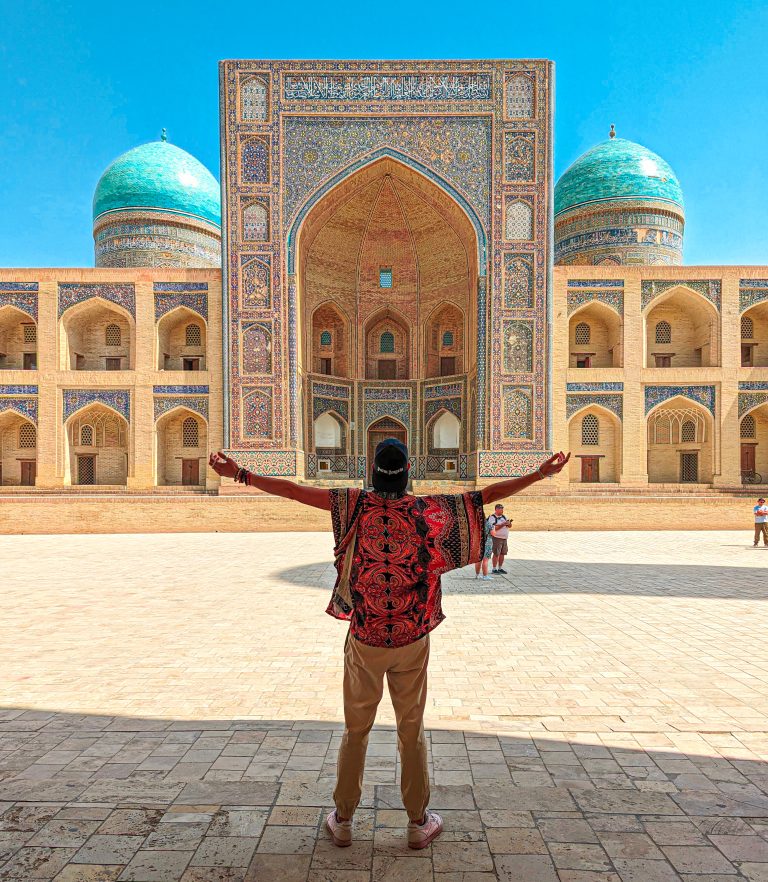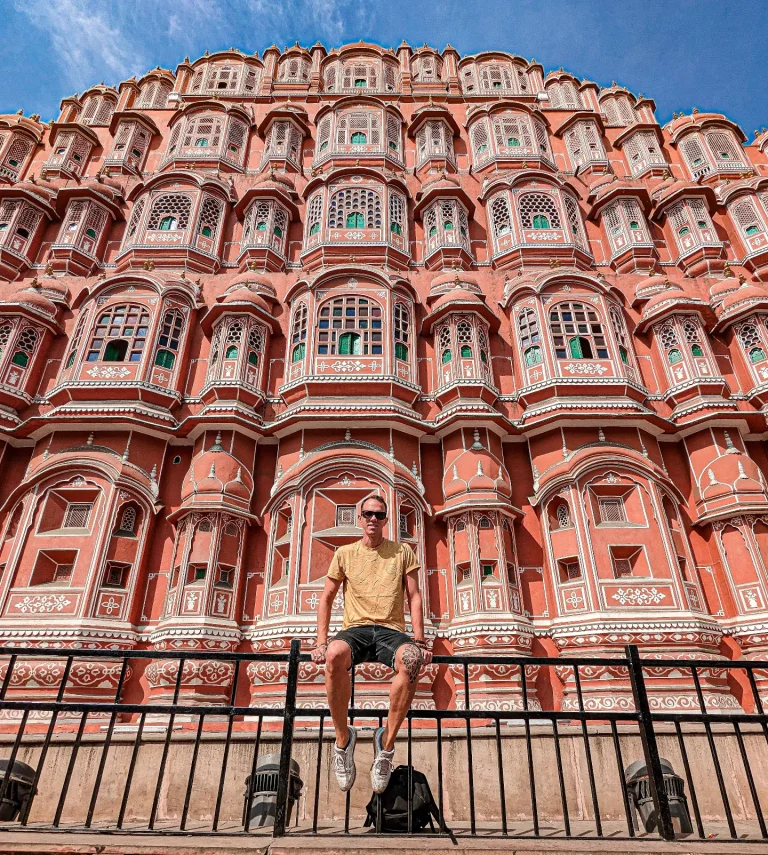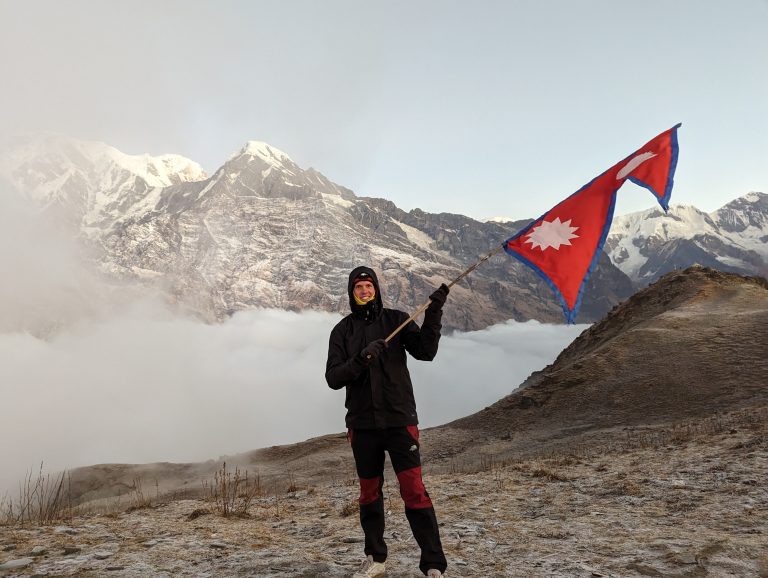Ultimate backpacking guide for Lebanon

Come discover Lebanon. This small state located in the Middle East is home to one of the oldest cities of humanity, Byblos, which has been constantly inhabited for more than 7,000 years.
Roman temples in the best condition that you can find in any other country, mountainous landscapes flowing into the sea and high hills that are covered by snow every winter. Vibrant metropolises like Beirut, a city that never stops and is the night capital of the entire Middle East.
A very safe country despite what the Western media and authorities say. Without armed conflicts or terrorism, yes, with some political instability and a serious financial crisis.
Everything you need to know for your trip to Lebanon:
- Best time to visit Lebanon
- Basic tips to visit Lebanon
- 6 Day route around Lebanon
- Daily budget for backpacking Lebanon
- Where to stay in Lebanon
- What to do in Lebanon if you have more time
Official exchange rate 1EUR = 25,000 LBP Go through this post to understand the reality of the exchange rate in Lebanon
Best time to visit Lebanon
Lebanon enjoys a Mediterranean climate and although it may seem impossible and you have a desert in mind, it is far from this reality. It is a mountainous country with peaks over 2,000 m high. It consists of four ski resorts and at the end of April snow could still be seen in the interior of the country near the Syrian border. It is one of the few places in the world where you can be skiing at 3 in the afternoon and at 4 o’clock swimming on the beach.
The best months to visit it in my opinion is from April to October. Although, if you do not like high temperatures you can avoid summer, since its climate is similar to that of Greece, Spain and Italy.
Basic tips to visit Lebanon
- Money: I will not tire of repeating it, carry cash with you and do not pay anything with a card unless it is with an international bank and with foreign currency but never LBP. Everything you need to know in this post.
- Accommodation: It will depend on the days you have, but the vast majority of travelers stay in Beirut, the country is small and everything is very close for day trips.
- Mobility: It is very easy to get around Beirut by bus, north from Daoura and south and east from Cola Station. Most trips will cost between LBP20,000 and LBP40,000. Bolt is half as cheap as Uber.
- Visas: For most nationalities, it is not required to obtain a visa in advance and it is obtained free of charge for 30 days at the same airport. Super important, do not carry any stamp from Israel or you will be denied entry to the country.
- Religion: It is a Christian country, although currently more than half of the population professes Islam. Muslims, Christians and atheists live in peace in this small country where you will find mosques and churches wall to wall.
6 Day route around Lebanon
I think I said the same thing about Jordan and probably Vietnam… But Lebanon is a very easy country to get around, it is small and relatively compact and the maximum non-stop driving distances will be 90 minutes from Beirut to anywhere in the country.
For this reason, I recommend that if you are going to cover the basics of the country, you locate yourself in Beirut and visit the country on radial day trips with Beirut as a base. The offer of accommodation outside of Beirut is quite scarce.
Although it shows you a 6-day route, you can do it perfectly in 4.
Day 1 – Saida (Sidon)
Saida (or Sidon) is a coastal town located in the south of Lebanon, with a Sunni Muslim religious majority.
It is the perfect getaway to start your trip, it is a relaxed town with relatively few tourists as most tend to head north and east of Beirut. Walk through its ancient Arab souks, Khan El-Franj, with labyrinthine cobblestone streets, try to find its hidden mosques like Bab El-Saray and be enchanted by its local sweets. You can eat at Al-Mina (Port/Marina in Arabic) freshly caught fresh fish with sides for around LBP 150,000.



After lunch you can visit the old fortress of Saida for LBP 4,000, an ancient castle jutting out into the sea. Built in the 13th century, it served as a fortress to protect the sacred land.
You can get to Saida from Beirut by taking a bus from Cola Station for around 25,000 LBP.
Day 2 – Baalbek and Bekaa Valley
The Bekaa Valley is accessible by public transport, although the main points of interest you want to visit will be a bit spread out and difficult to access, so to make it easier I took a day tour with another friend I met at the hostel. Robin, a Lebanese boy who has an agency, took us to the Bekaa Valley and explained the history of the region and the country.
The most impressive thing about the journey to the Bekaa Valley is how close you get to being from Syria (very high on my list of next destinations), with which you will see a multitude of Syrian refugee camps that are still waiting for their cities to be liberated. The other shocking point is that it is an area where Hezbollah has very high support from the population, so you will see flags and symbols everywhere. Currently, Hezbollah is a political party with parliamentary representation in the Lebanese government, with 16/200 seats.

The tour consisted of three stops. The ruins of Anjar, the former vacation city of an Umayyad caliph, which are made up of the remains of other temples that his workers dismantled in order to build the summer city on time. The Ksara wineries, you will stop to taste the most typical wines of the region. Finally, the ruins of Baalbek with the imposing Temple of Bacchus, in my opinion one of the best preserved and imposing temples I have ever seen.



At night, a long night awaited us with other travelers and locals at a barbecue organized by the hostel where I was staying for 6 days.
Day 3 – Jbeil (Byblos) and Batroun
Leaving aside the Temple of Bacchus, perhaps the most impressive place of the entire trip. The third day was the most interesting and varied of all. The night before in Beirut we made friends from Jbeil who offered to show us around their region, and what better way to discover the country than with the help of a local and his car?
You can get to Jbeil from Daoura station, the trip is about 20,000 LBP and it takes about an hour.
With another colleague we were visiting Jbeil and its archaeological ruins (8,000 LBP) in the morning and eating at Al-Mina, later they came to pick us up. Jbeil is probably one of the oldest cities in the entire civilization to have been continuously inhabited, some 7,000 consecutive years, according to the most recent studies on its ruins.
After lunch Gio, our local friend, gave us a tour of the center of Jbeil, we saw the church he used to go to as a child, his school and the house where he grew up and which his family has now turned into an AirBnB. In addition, he took us to Batroun, a town full of life and young people that is becoming the main place of leisure for local youth, and we went on a bit of a route through the mountains to see the Monastery of the Virgin of Rafqa.
Day 4 – Tripoli and Harissa
Tripoli is, in my opinion, one of the poorest (big) cities in the country, with a Shiite Muslim majority, which contrasts sharply with the rest of the country. If you don’t have much time you can do without it, but if you visit it prepare yourself for a jump in time.
It is a chaotic city, poorly built between hills and the whole city seems to be half started, buildings incomplete or half demolished and quite dirty and noisy. The castle of Tripoli 8,000 LBP is its main tourist attraction, despite this I was the only tourist in it for almost 1 hour that I was visiting it.
Its main attraction are the souks (souks or bazaars) I think I spent almost 2 hours admiring up and down the madness, smells and noise that was breathed between those narrow and crowded alleys. I also did the return to Beirut by bus (20,000-25,000 LBP, one way also from Daoura) yes, this time stopping in Jounieh, for two reasons to go up to see Our Lady of Harissa of Lebanon by cable car … and eat ! Due to Ramadan, in the north of the country, and its religious influence, it was impossible for me to eat anything in the whole city.






In Jounieh, there is the Teleferique du Liban and its price is 70,000 LBP. This cable car built in 1965 will take you to the top of the mountain where Our Lady of Harissa is located. Cable car not suitable for those who are afraid of heights, it is a very small cabin and I imagine that when it is windy you have to move a lot. From the top you can see the city of Jounieh and its bay and Beirut in the distance to the south.


Days 5 and 6 – Beirut
Beirut was known as the Paris of the Middle East, and this can be seen in some of the city’s neighborhoods. Although far from resembling Paris in any general aspect, it is true that some buildings can evoke that feeling.
Beirut, like many large capitals in these regions, does not have much in excess to visit, it is a city to wander around and get lost in its neighborhoods. It is a large metropolis of 2.5 million inhabitants with large skyscrapers, what shocks the most about the city is to see how large buildings in the middle of the city have been completely abandoned for years, half-built while large buildings and hotels rise next to them. luxury.
I recommend starting your visit at Mar Mikhael, from where you can see the most recent impact the city has suffered. In 2020, 2,750 tons of ammonium nitrate exploded in a port warehouse, to this day the Lebanese government has not yet taken a position on the matter or apologized for the victims. The impact of the explosion was similar to that of an atomic bomb without its obvious consequences. You will see that most of the buildings on the waterfront are abandoned or under reconstruction.

From there head to the Hamra area (the city’s main commercial artery) through the center of Beirut, where you can find the Mohammad Al Amin Mosque, the Al-Abed clock tower (which is a Rolex) and all the country’s government buildings including the Grand Serail (the government palace).
When you are tired of seeing buildings and asphalt you can go to Pigeon Rocks to change it for sea and sunsets, next to it the Corniche Ain Mreisse.







For those who are passionate about museums and history, there is the National Museum of Beirut, how many times can you visit a museum for just 30 euro cents? It is worth spending some time to see its mosaics and mummies in perfect condition. Next to it is the MiM Mineral Museum.
There is not much more to explore in the city, but as I mentioned in previous lines, the beauty of Beirut is to walk, walk and walk. See the contrasts between neighbourhoods, take a bus, eat a shawarma and talk to the cook or party in Mar Mikhael. Beirut is a city that has all the options for everyone.
Daily budget for backpacking Lebanon
Contrary to what I had read prior to my trip, it is a very cheap country. You can handle yourself on a low budget between €40-50 perfectly without spending anything.
- Accommodation: Perhaps the main item of expense, due to the limited tourist offer for backpackers, you will not have many options and it will increase even more if you sleep outside of Beirut. The two hostels in the city are between €11-15 per day.
- Food: It will depend a lot on what you eat and where you eat it. In my case I averaged €14 a day, including a meal in one of the best restaurants in Byblos port, local restaurants to eat and street food once a day. An expensive restaurant is €25, a normal restaurant for around €7-8 and street food around €3.
- Transportation: Including a €25 taxi the first day when you arrive at the airport at dawn, the rest is €3-4 per day that includes an Uber around the city, buses to different cities and Uber back to the airport. I recommend that you use Bolt instead of Uber the prices are practically half.
- Leisure: This section includes drinks, tickets to different places, tours, etc… A daily tour is between €30-40 in cars of 4 and drinks and nightlife €2 for beers and €4 for cocktails.

For those traveling on a very tight budget, you can perfectly average €30 a day by watching the food and not hiring any tour.
Where to stay in Lebanon
Take into account the days that you are going to be in Lebanon to plan your vacation, but if it is a short trip of around a week or less I would stay most of the days in Beirut because of the proximity to all the points of interest in the country less than 1.5 hours by car. If you intend to spend more days, then it is likely that you will try to reach more remote and remote points in Lebanon such as Qadisha Valley, Tyre, etc… In Beirut this is my recommendation for backpackers:
- The Colony Beirut Hostel // Beirut: Perfect location in Mar Mikhael, five minutes walk from the area of bars and restaurants, very clean, comfortable and with privacy (cabin-style rooms). Although the best of all is the good vibe that is breathed, you will always find someone to chat with, have a few beers or go explore the country.

This and another are the only two hostels in the entire country.
What to do if you have more time in Lebanon
Personally, I take with me the feeling of having covered a large part or the vast majority of Lebanon, although it is true that Cedar Valley, Qadisha Valley and Tyre remained pending.
My biggest thorn is not having considered a week or so more and having gone to Syria. I was lucky enough to meet several people who went to visit her and they all came back delighted and talking wonders about the country and its people. Although to visit it you must hire a tour otherwise you will not be granted a visa.


